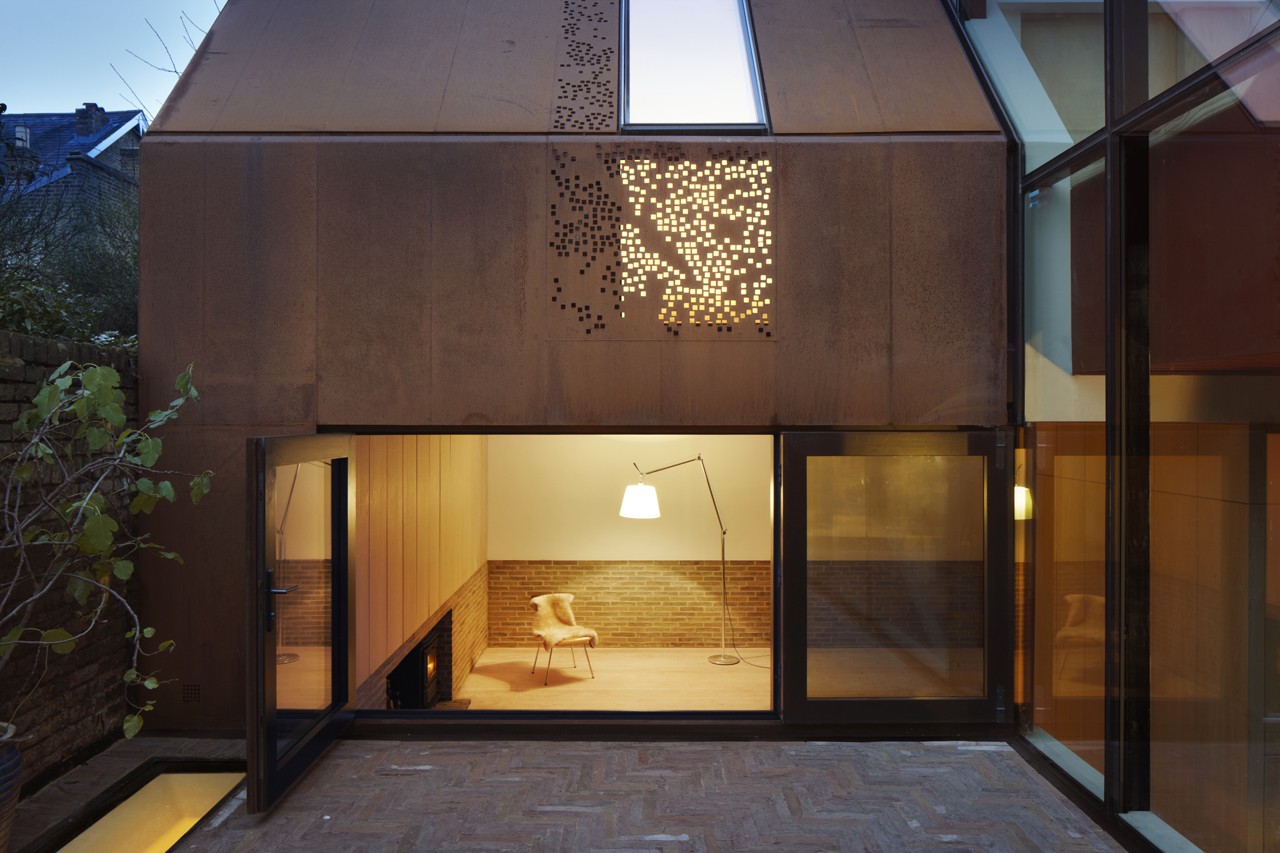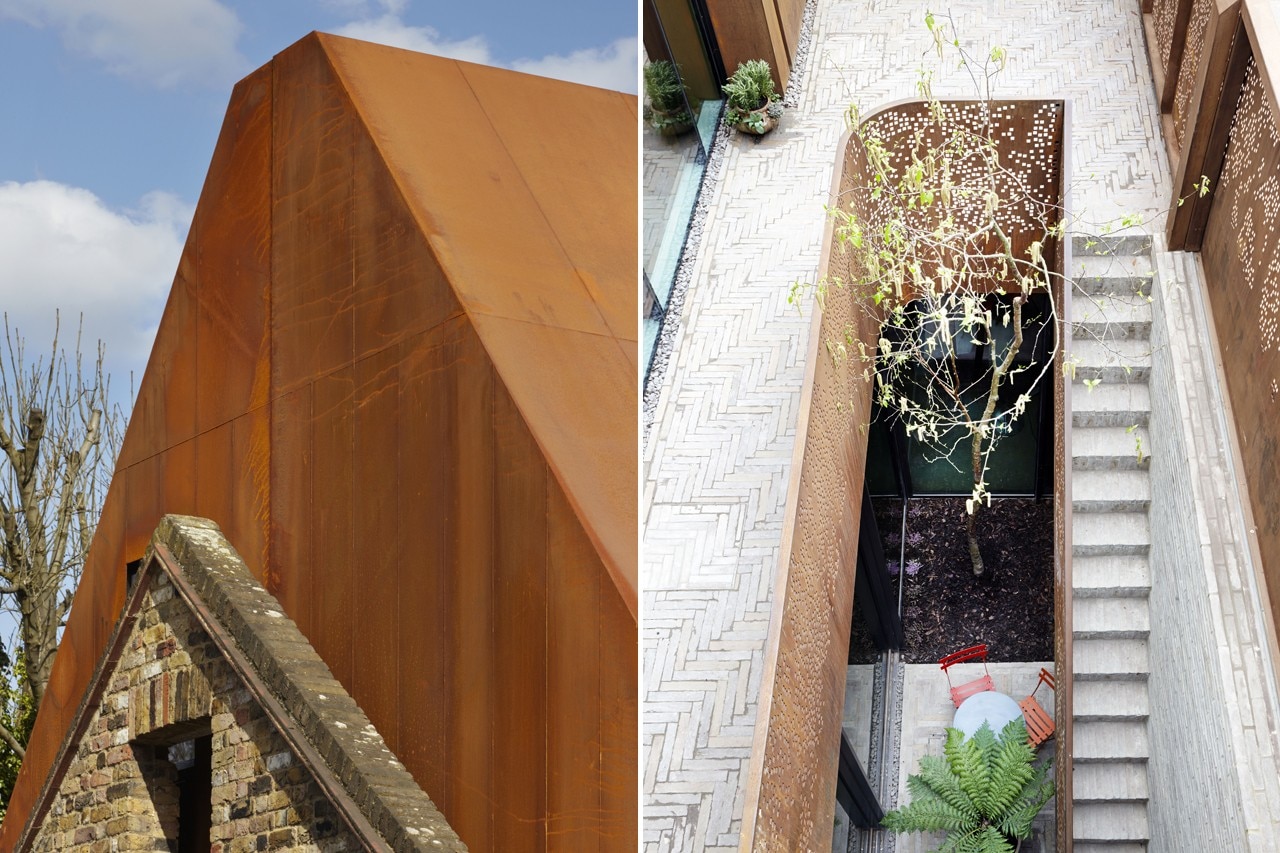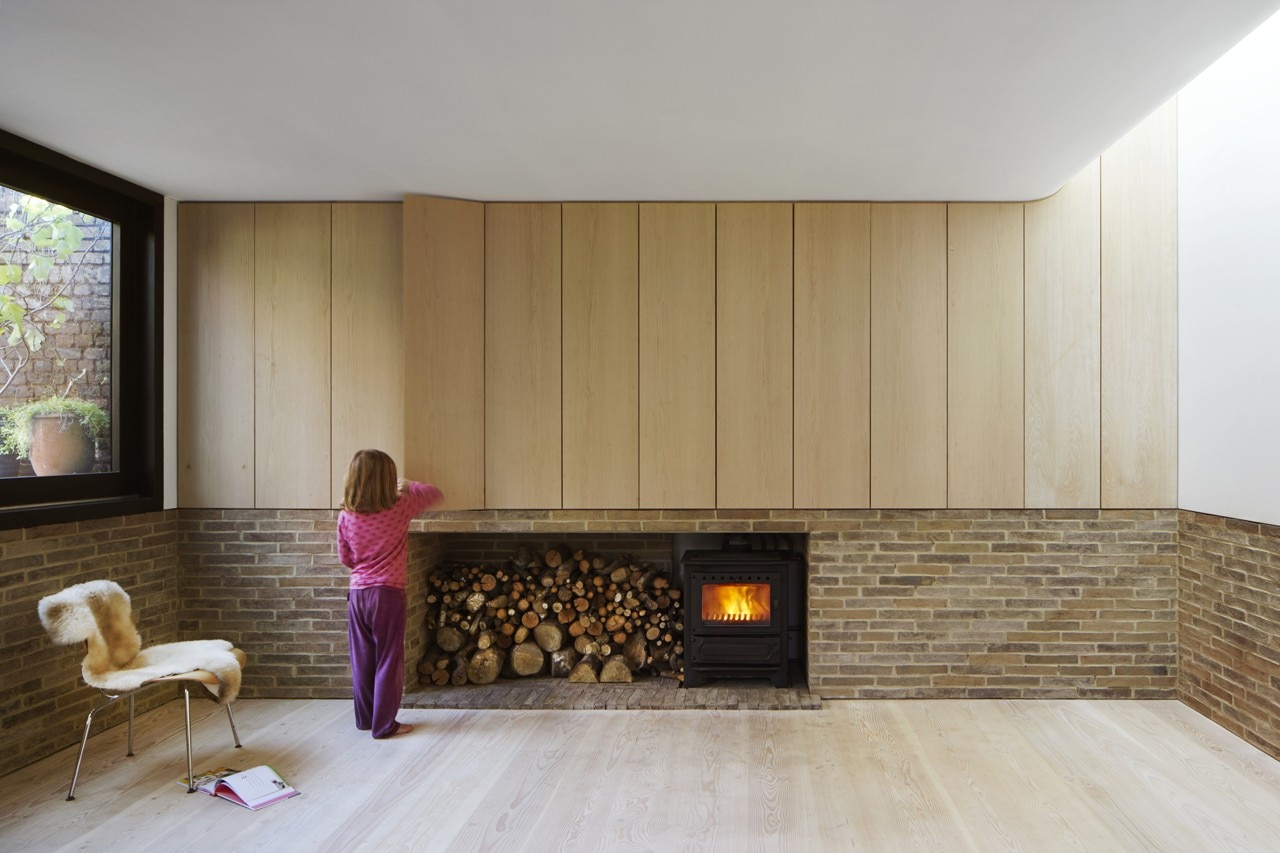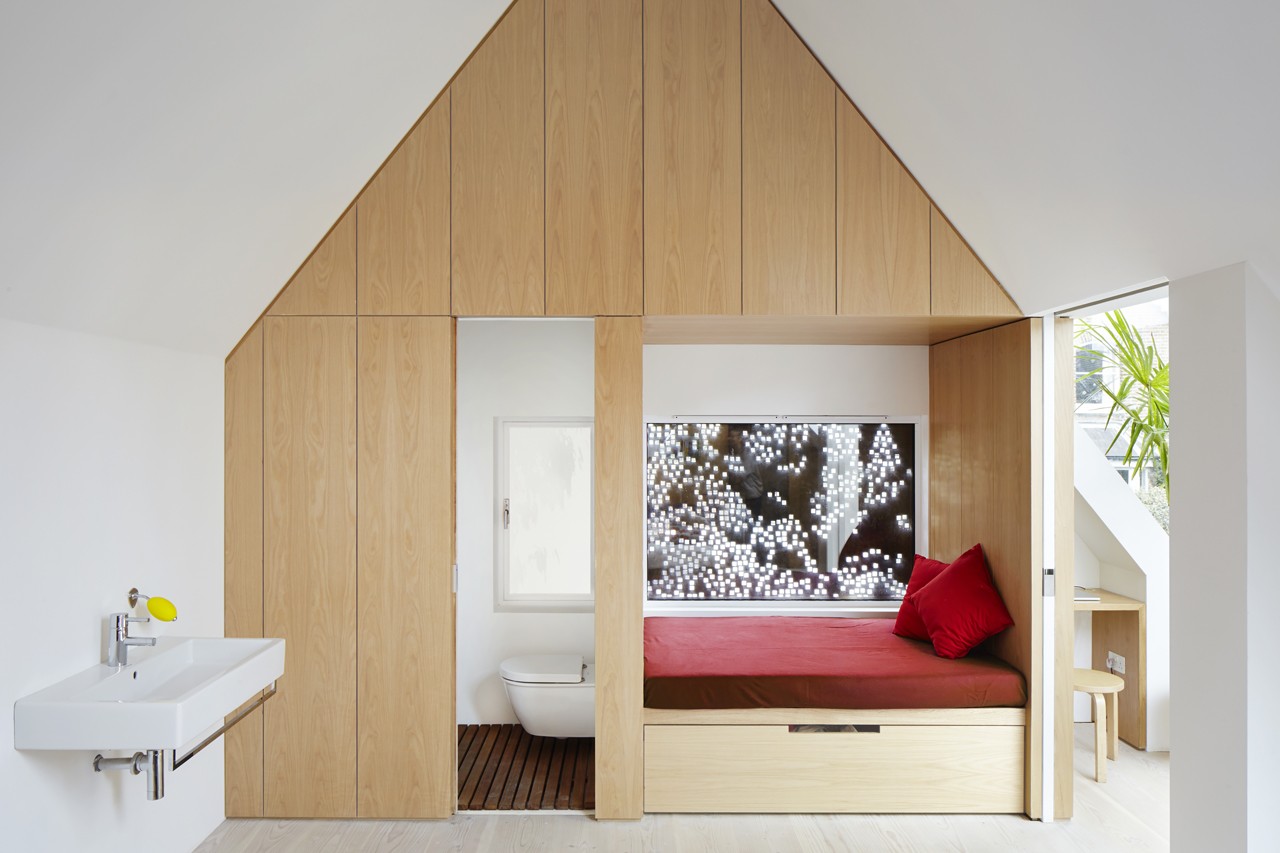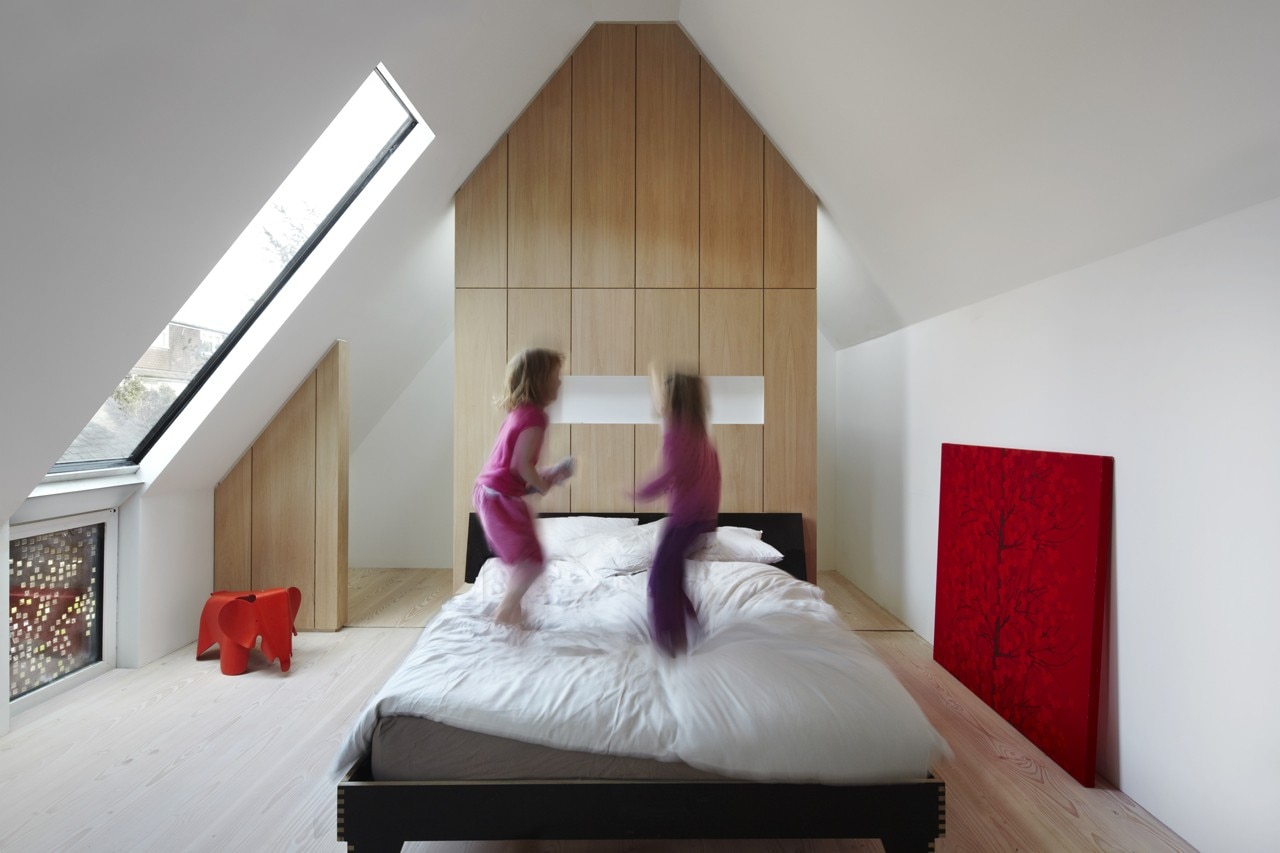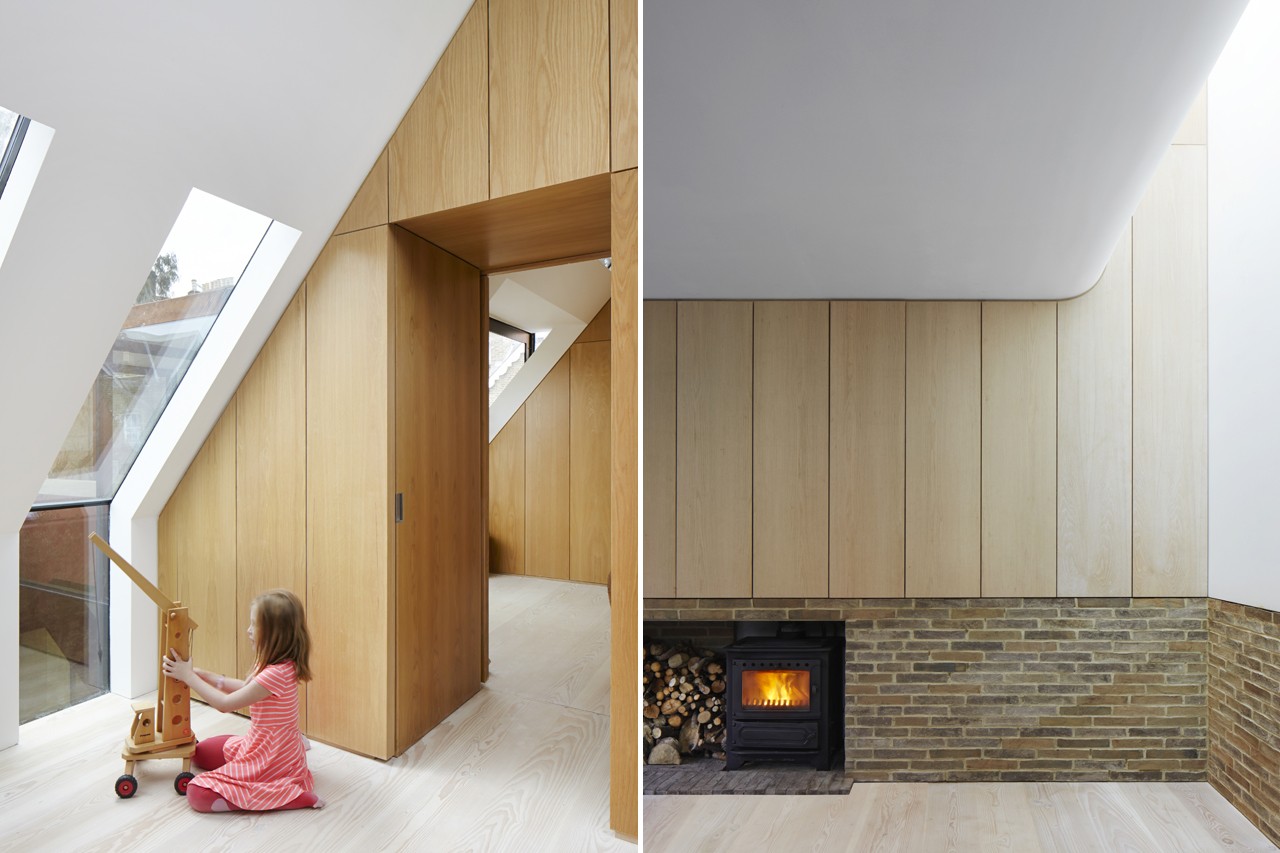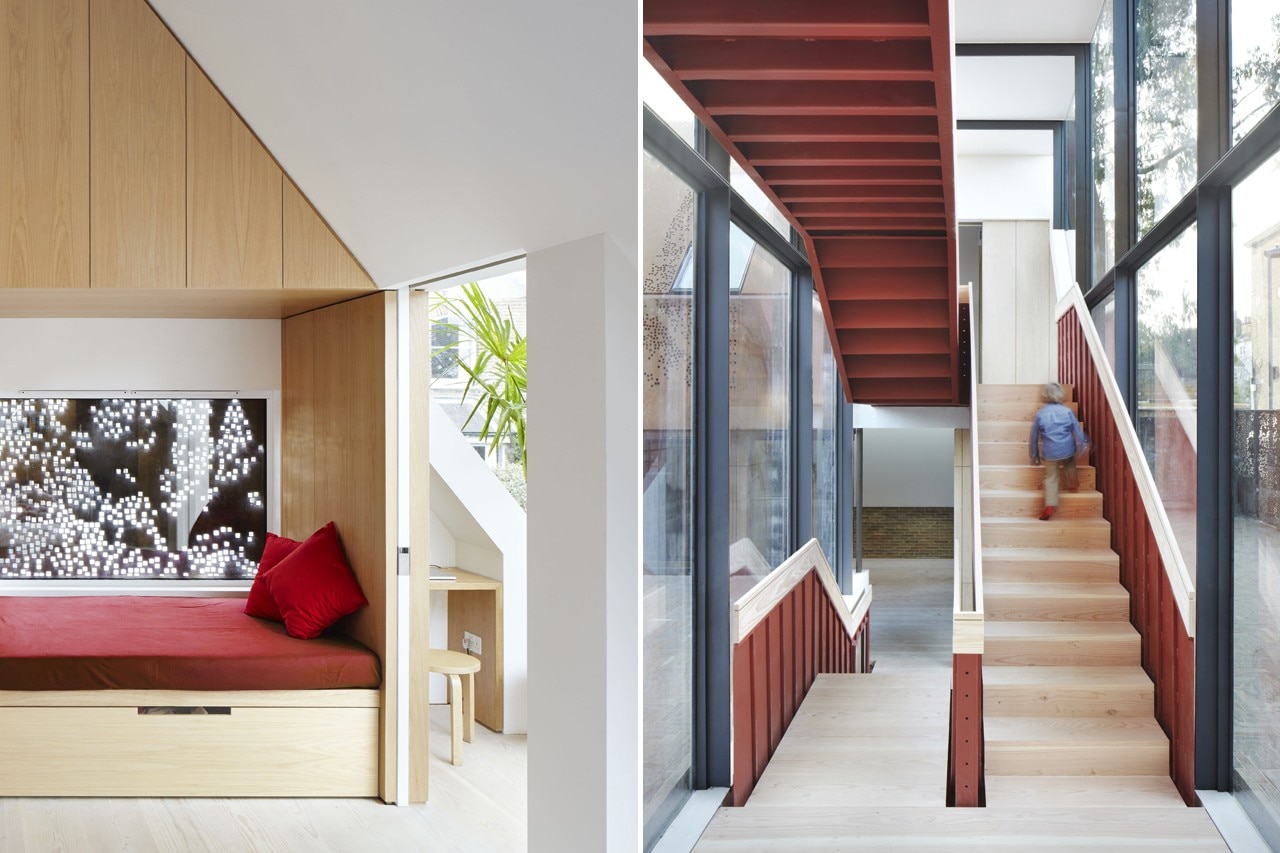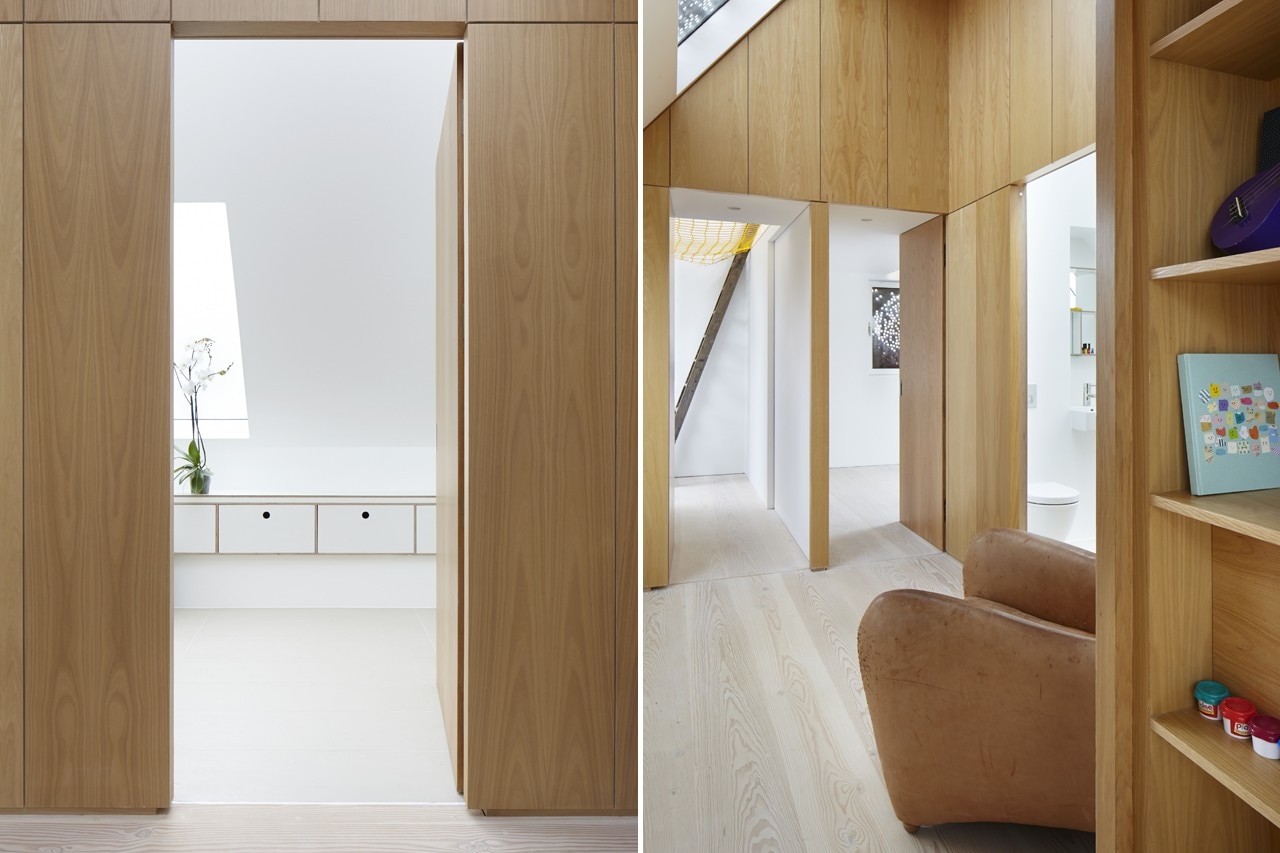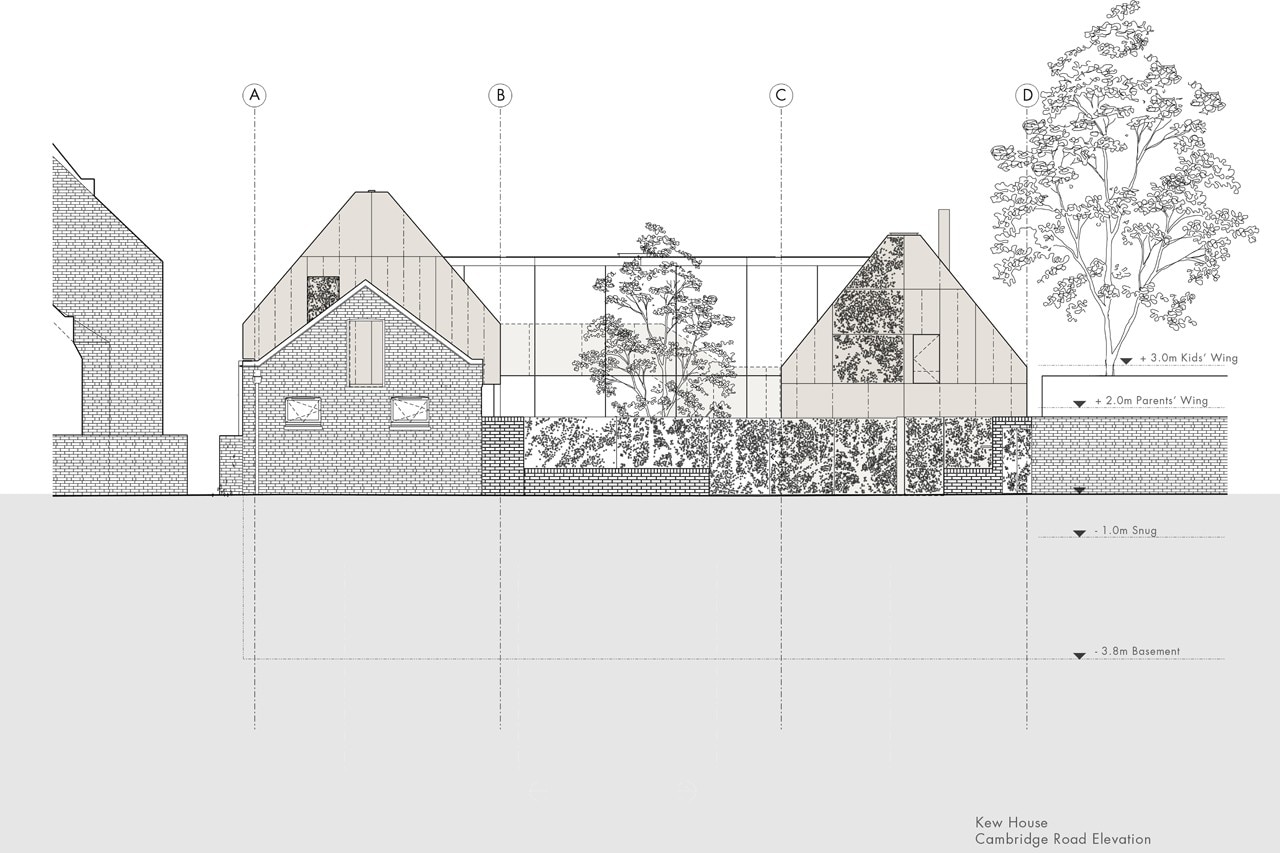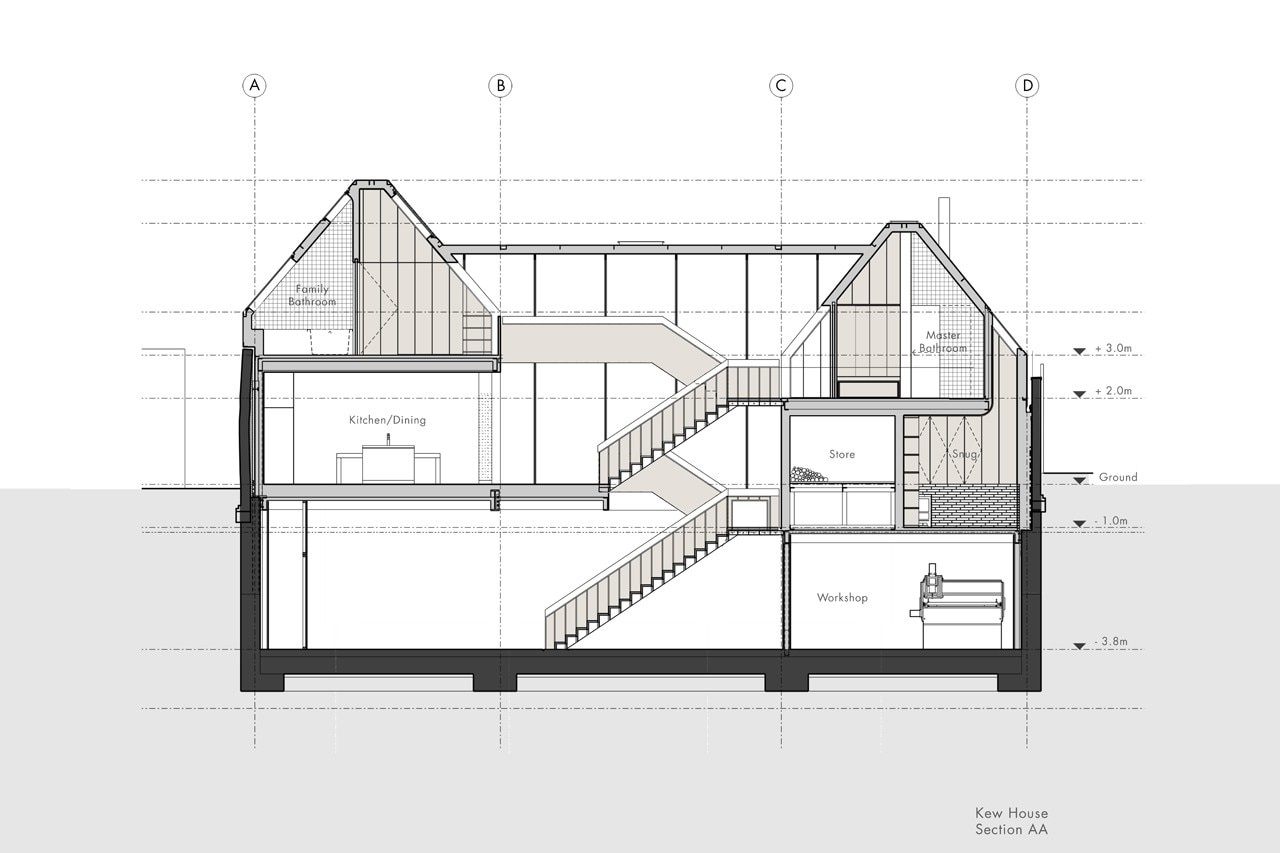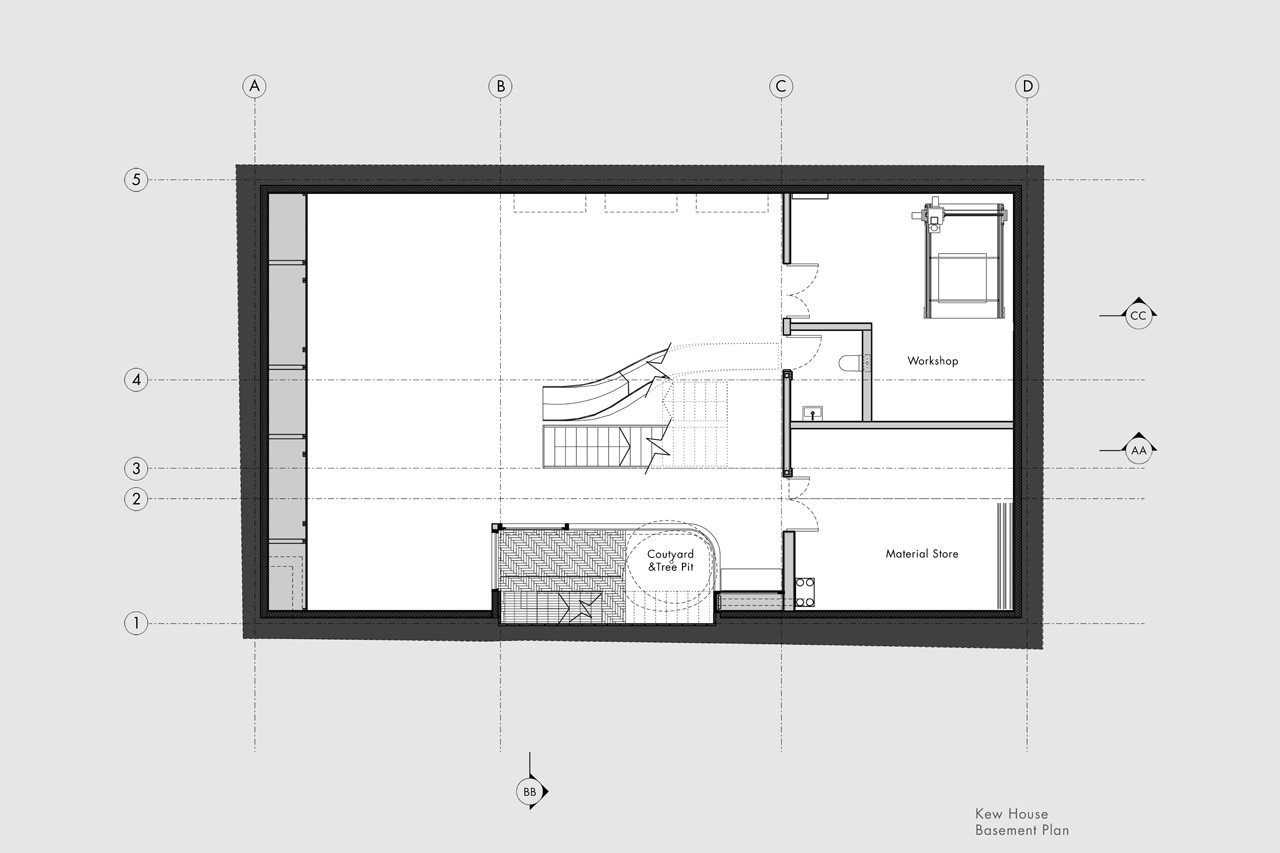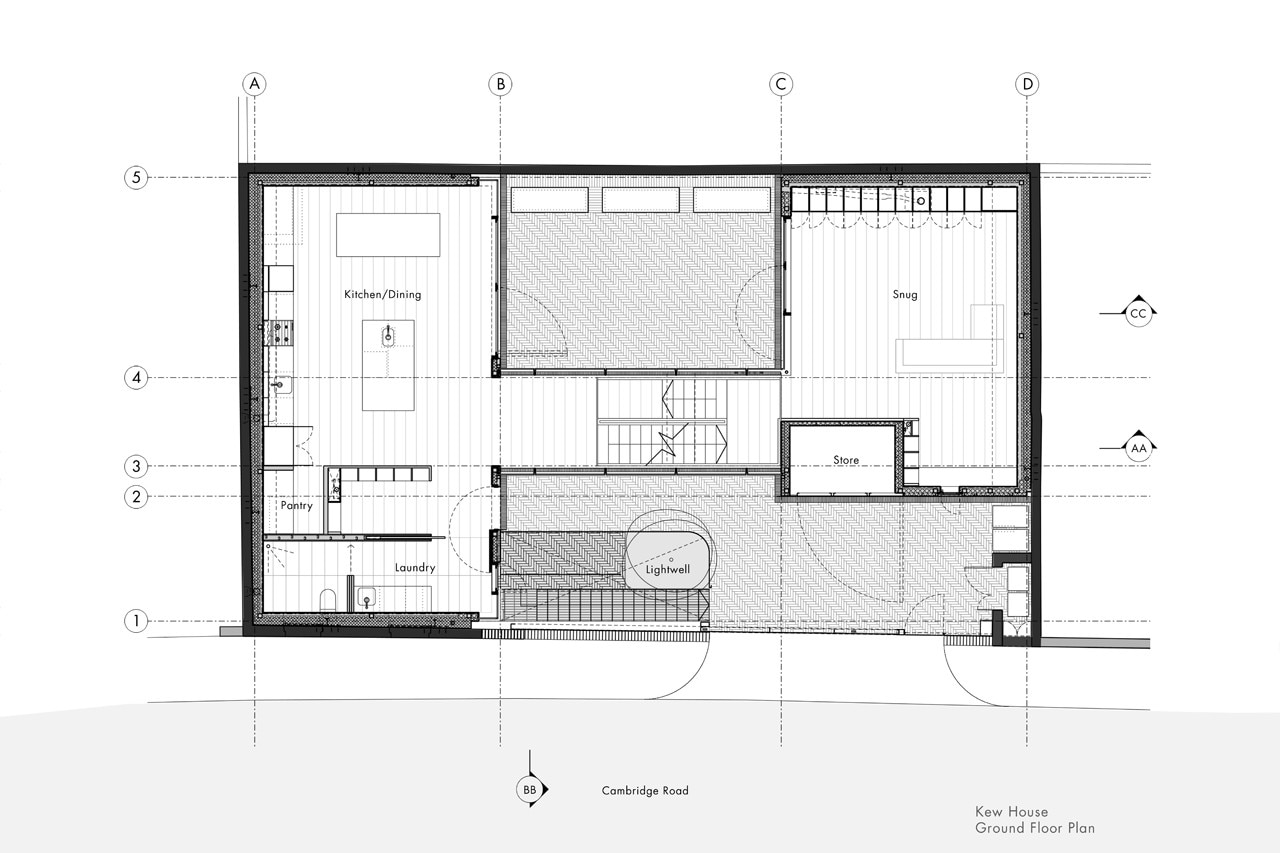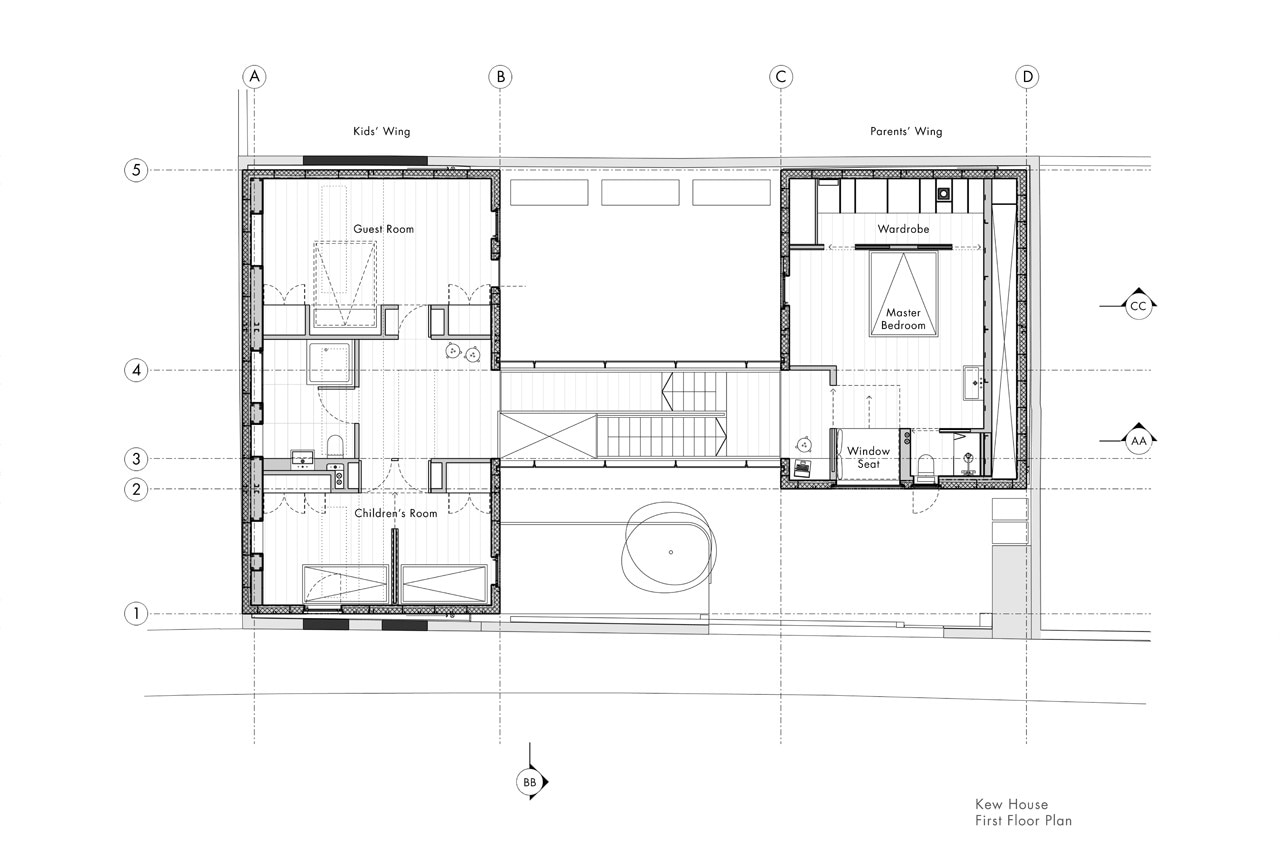%20Jack%20Hobhouse.jpg.foto.rmedium.jpg)
First and foremost a family home, the spaces are informal but rich with incidental spaces, unexpected light and complex vertical volumes. The house is formed of a simple plan to make the most of the constrained site, reduce the building’s mass in the streetscape and respond to the living patterns of the family.
Consisting of two rectangles; one slightly smaller, set back and sunken 1m lower, the wings each have living spaces on the ground fl oor and bedrooms above. Connecting the wings is a glass encased circulation link allowing light to pour into the house whilst providing breathing space between internal spaces.
The two shells housing the main living and sleeping areas are formed of 4mm weathering steel, a hardworking combination of structure and façade. The weathering steel is maintenance free, essential for the enclosed site, and is softened by a patchwork of expressed welds and perforated panels. The deep orange tones of the weathering steel and the perforations within this skin echo the dappled light and autumnal palette of nearby Kew Gardens. Inside, oak veneer paneling and Dinesen flooring are the basis of a light, natural and refined palette of materials.
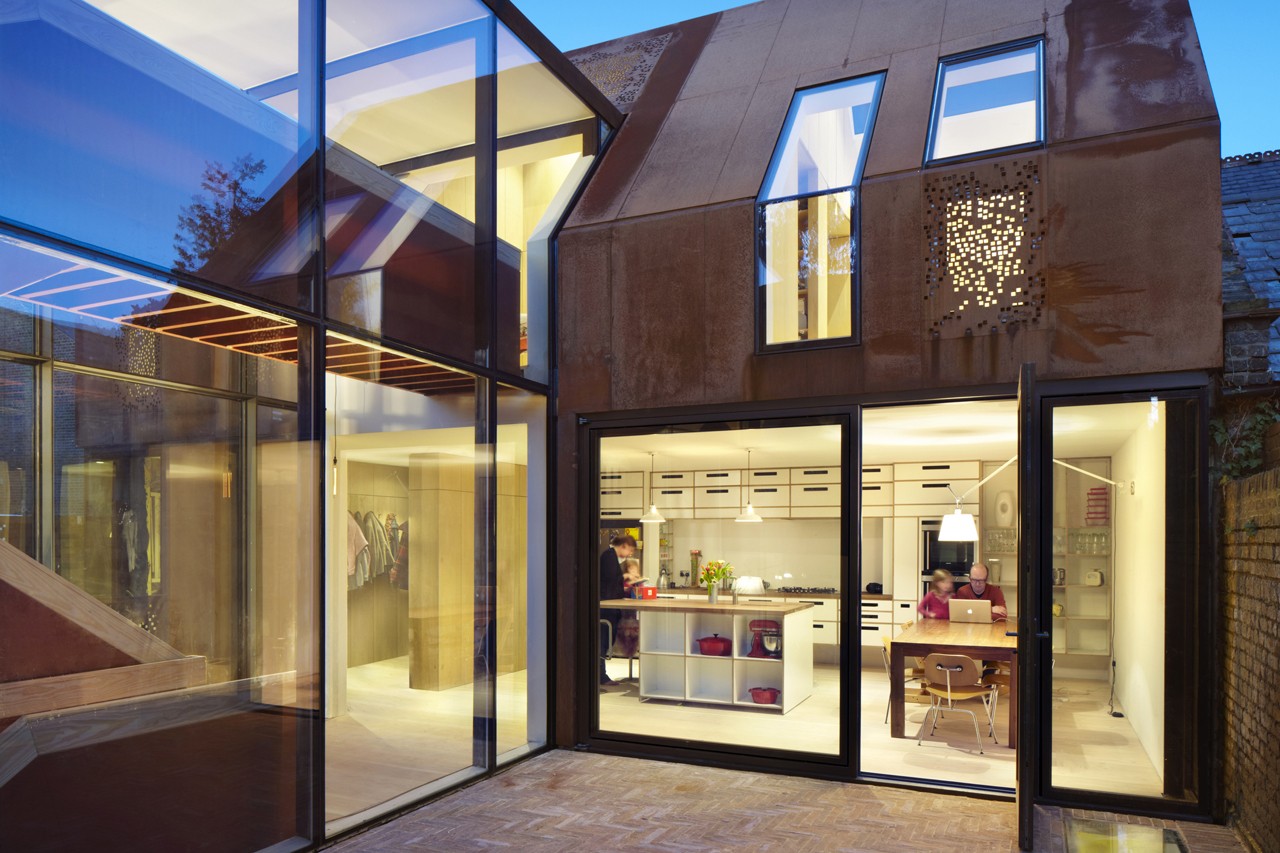
A list of planning constraints – including a conservation area context, a change of use and no access on three sides – formed a backdrop to the project. To overcome these challenges Piercy&Company inserted the house behind a retained 19th century brick gable end and split the house into twin gabled forms in keeping with local massing. The natural patina of the weathering steel with its marks, stains and perforations gives each surface a unique character depending on the exposure and orientation; anchoring the form into its context and imparting a sense of permanence.
Kew House was an experimental build, driven by the architect’s and client’s shared interest in a “kitof-parts” approach and the self-build possibilities emerging from digital fabrication.
The weathering steel shells were prefabricated in Hull, then craned into place on site and welded together. CNC milling and the on-site joinery workshop were used to create bespoke paneling, furniture and cabinetwork that could be fitted by the client and a small team of architecture graduates, testing the theory that digital fabrication can reduce the distance between design and production.
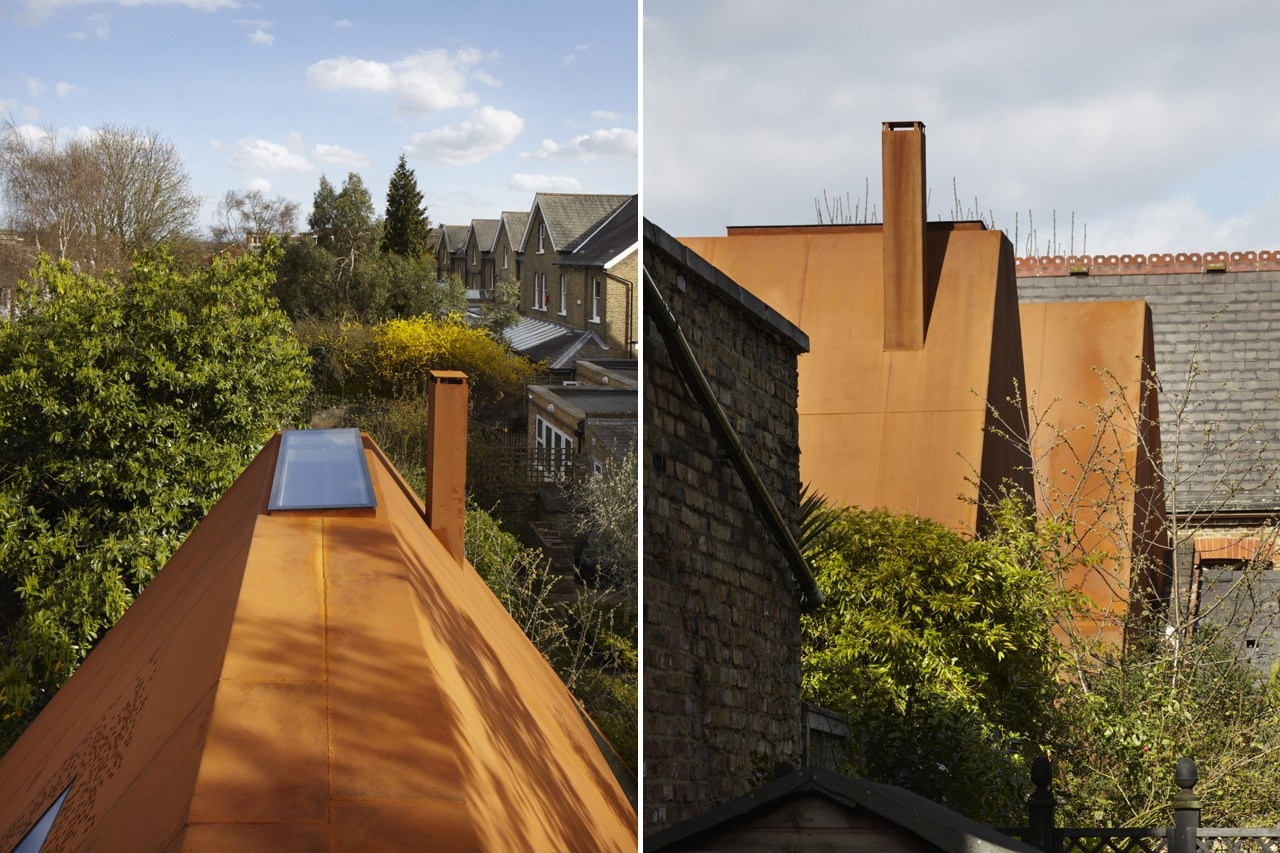
 View gallery
View gallery
Kew House, London, UK
Program: single-family house
Architects: Percy&Company
Structural Engineer: Price & Myers
Sustainability Consultant: Price & Myers
Key Sub-Contractors: Commercial Systems International, Estbury Basements, Sam Lucas
Area: 368 sqm
Completion: 2015


